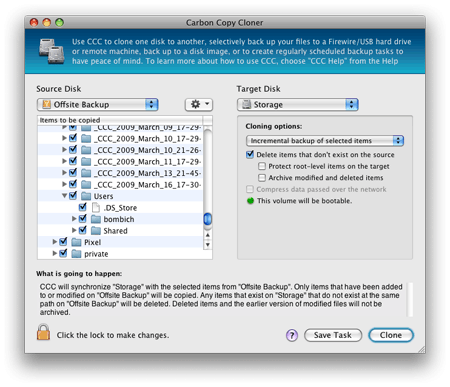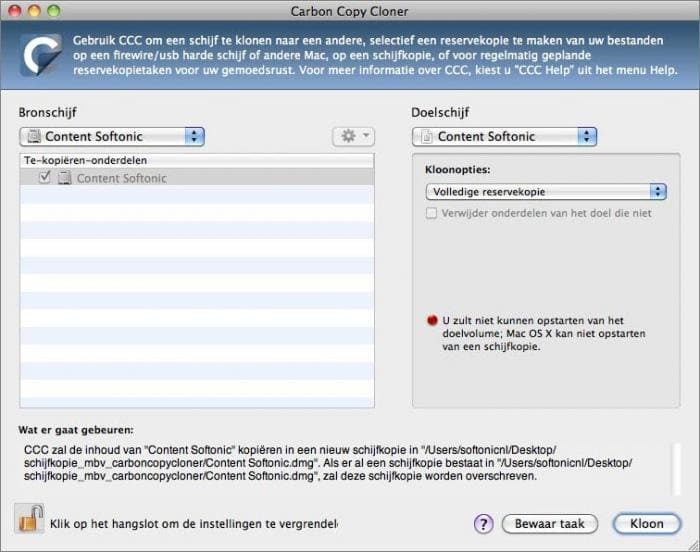

- #CARBON COPY CLONER WINDOWS INSTALL#
- #CARBON COPY CLONER WINDOWS SOFTWARE#
- #CARBON COPY CLONER WINDOWS PC#
- #CARBON COPY CLONER WINDOWS WINDOWS 7#
The minor limitations are that it will always back up the system partition whether you like it or not, and that it only works with NTFS drives. If you take the brain-free option of letting it do whatever it likes, it will make both a file-level copy and a clone of your hard drive. This is not the most sophisticated software, but it seems to be reliable and it is very easy to use. Since you are fortunate enough to be using Windows 7, however, you can use the built-in Windows Backup and Restore program. (Perhaps I should confess to using Clonezilla from a GParted Live Linux CD, but if you don't already know about this program, you probably shouldn't be using it.) There are also some good free disk clone programs including Paragon Backup and Recovery Free and PING (Partimage Is Not Ghost). There is also a free version for your Western Digital hard drive: Acronis True Image WD Edition Software. file backups, and full, incremental and differential backups. If you're paying for software, Acronis True Image Home 2011 is probably still the system of choice.
#CARBON COPY CLONER WINDOWS SOFTWARE#
However, the trend is towards back-up software that does both. For most users, periodic or continuous file-based back-ups are probably still the best approach. As well as being useful for schools and libraries, it's good for journalists who test a lot of software or work with malware, and I'm sure at least a few home users do the same thing with the computers their kids use. The "disk image" or snapshot approach is ideal if you want to return a system to a known state. Microsoft provides free Windows Steady State software for this purpose, but there are commercial alternatives such as Faronics' Deep Freeze and Fortres' Clean Slate. The same idea is used by many cybercafes and some libraries and schools: instead of trying to clean up an operating system that may have been compromised or abused, they simply start each day with a fresh image. This enables them to get Windows and all their corporate software installed in the time it takes to copy the image to the hard drive. Today, many large companies have their own Windows "disk images", which they copy to new PCs. It's somewhat easier to clone Windows if you do it under the control of a different operating system, typically Linux, or a separate server. Later, Acronis software became popular for the same purpose. Copying could cause problems because Windows would lock and refuse to copy any of the files it was using, and when Norton Ghost appeared shortly after Windows 95, this provided a simple and very quick way for users to clone and restore their drives. The traditional way is to copy all the files to a separate hard drive, and the slightly newer method is to make a bit-by-bit copy or "clone" of the whole hard drive. There are two ways to back up Windows and other operating systems. I would use the same make (WD) and their software.

#CARBON COPY CLONER WINDOWS INSTALL#
OK now.) Given the time taken to install Windows, Microsoft Office andĪ load of specialised stuff I use for work, I wonder if I should beĬloning the whole hard drive on a regular basis.
#CARBON COPY CLONER WINDOWS PC#
(The PC was replaced under warranty and seems
#CARBON COPY CLONER WINDOWS WINDOWS 7#
After replacing my work laptop, I had to reinstall Windows 7 not


 0 kommentar(er)
0 kommentar(er)
